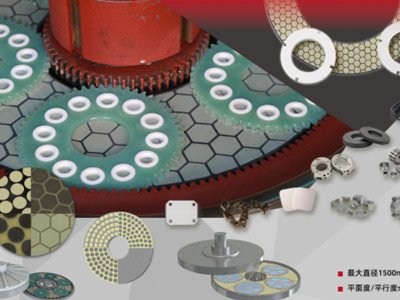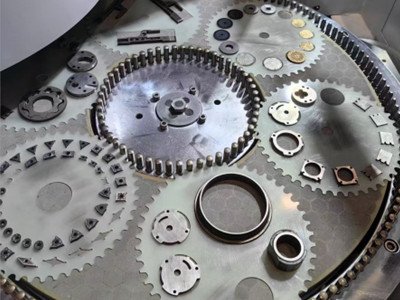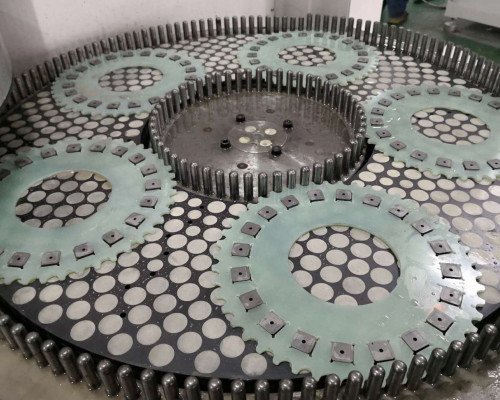25
Mar
End face grinding, especially double end face grinding, is an efficient and precise processing technology, which is widely used in end face processing of metal and non-metallic materials. This process plays an important role in the fields of automotive parts, bearings, hydraulic parts, etc., and can ensure high flatness, high parallelism and excellent surface quality of workpieces. As the manufacturing industry’s requirements for high-precision, high-efficiency and environmentally friendly processing continue to increase, end face grinding technology is also continuously optimized and innovated. At present, the double end face grinding process is mainly divided into two methods: dry grinding and wet grinding, each of which is suitable for different processing needs and process requirements to meet the diverse needs of industrial applications.


Dry grinding refers to grinding without coolant or lubricant. Compared with traditional wet grinding, dry grinding is more environmentally friendly and can reduce subsequent cleaning costs. However, it places higher requirements on the heat resistance of the grinding tool and the surface quality control of the workpiece.
Features of Grinding Without Collant:
1. Environmentally friendly: no need to use coolant, reducing waste liquid treatment costs and environmental pollution.
2. High thermal management requirements: dry grinding will generate high heat, and thermal deformation needs to be controlled by optimizing the grinding disc material (such as ceramic grinding wheel) or adjusting the process.
3. Economic: The liquid circulation system is omitted, and the equipment maintenance cost is low.
Dry grinding is suitable for industries with high environmental requirements, such as high-strength alloy parts processing in the aerospace field, and end surface processing of materials sensitive to coolants (such as certain composite materials).
Double-end grinding disc is the core component of double-end grinding equipment. Its application in dry grinding and wet grinding has its own advantages and disadvantages. The specific choice depends on the processing needs and market orientation.
1. Dry grinding application:
– Advantages: No need for coolant, suitable for small batch and diversified production; no need to clean the workpiece after processing, simplifying the process.
– Disadvantages: Heat accumulation may cause workpiece deformation or shorten the life of the grinding tool.
– Suitable for processing small precision parts, such as watch parts, miniature bearings, etc.
2. Wet grinding application:
– Advantages: Coolant effectively dissipates heat, improves processing accuracy and surface quality; the life of the grinding tool is longer.
– Disadvantages: Additional waste liquid treatment is required, which increases operating costs.
– Suitable for mass production, such as automobile engine cylinder end faces, industrial pump and valve components, etc.

As the global manufacturing industry transforms towards intelligence and greening, the market demand for double-end grinding technology shows the following trends:
1. Driven by high-precision demand: The requirements for part flatness, parallelism and surface roughness in industries such as automobiles and aerospace are constantly increasing, which has promoted the popularization of end-face electromagnetic grinding technology. Especially in the field of new energy vehicles, the demand for components such as battery trays and motor housings has surged, becoming a market growth point.
2. Environmental protection promotes dry grinding: The global emphasis on environmental protection has made dry grinding technology gradually become a hot spot. Especially in the European and North American markets, strict waste liquid discharge regulations have prompted companies to turn to dry grinding processes.
3. Coexistence of dry grinding and wet grinding: Although dry grinding is favored for its environmental protection, the advantages of wet grinding in high-precision and mass production are still irreplaceable. The future market will present a situation of coexistence and complementary development of the two.
4. Technological innovation and cost balance: The market demand for efficient and low-cost processing solutions has prompted companies to increase R&D investment in grinding disc materials (such as diamond and CBN grinding wheels) and equipment automation. For example, the application of intelligent temperature control system in dry grinding effectively alleviates the problem of thermal deformation and further broadens its market prospects.

It can be seen that dry grinding, wet grinding and double-end grinding each have their own unique advantages and applicable fields. Changes in market demand indicate that future development will pay more attention to the balance of technological innovation, environmental protection and cost-effectiveness. For Moresuperhard, keeping up with market demand trends and optimizing process selection will be the key to seizing market opportunities. Against the background of global manufacturing upgrades, double-end grinding technology will undoubtedly play a greater role in the field of precision machining.
At present, Moresuperhard’s double-end grinding solutions have matured and are constantly improving and enhancing dry grinding processes to meet the needs of different customers. And we provide you with suitable high-efficiency double-end grinding discs and dressing rings for different application scenarios and different grinder models.








